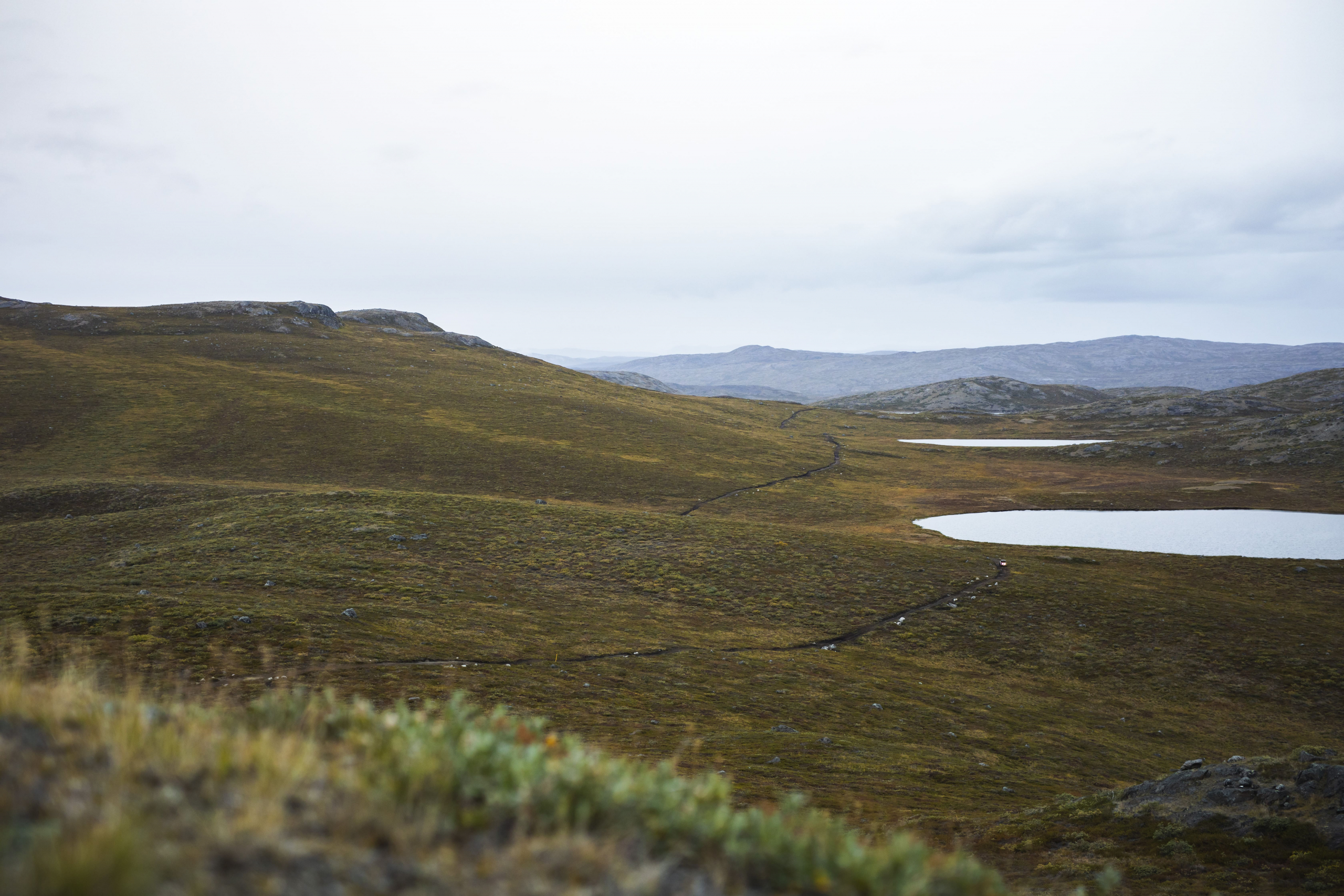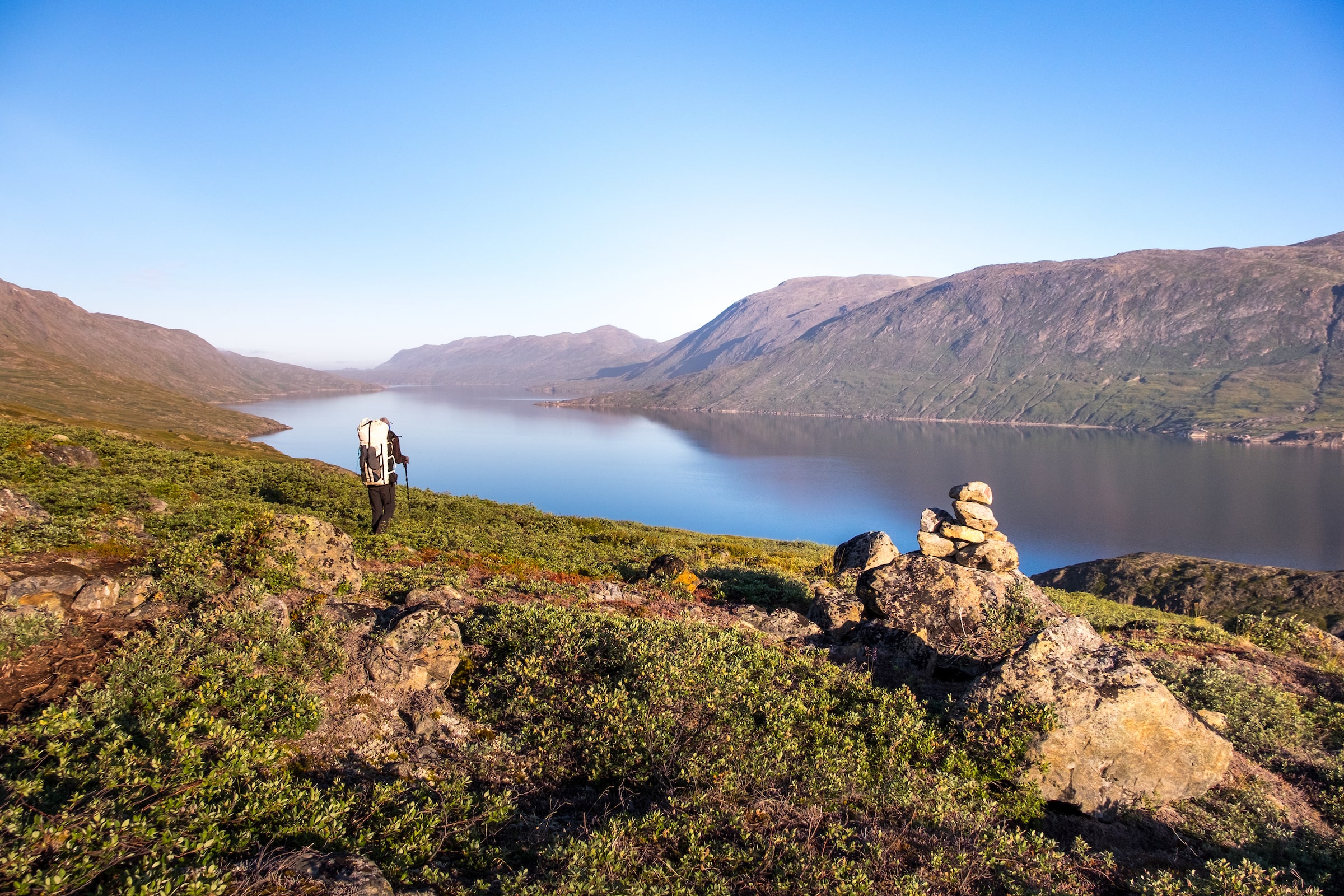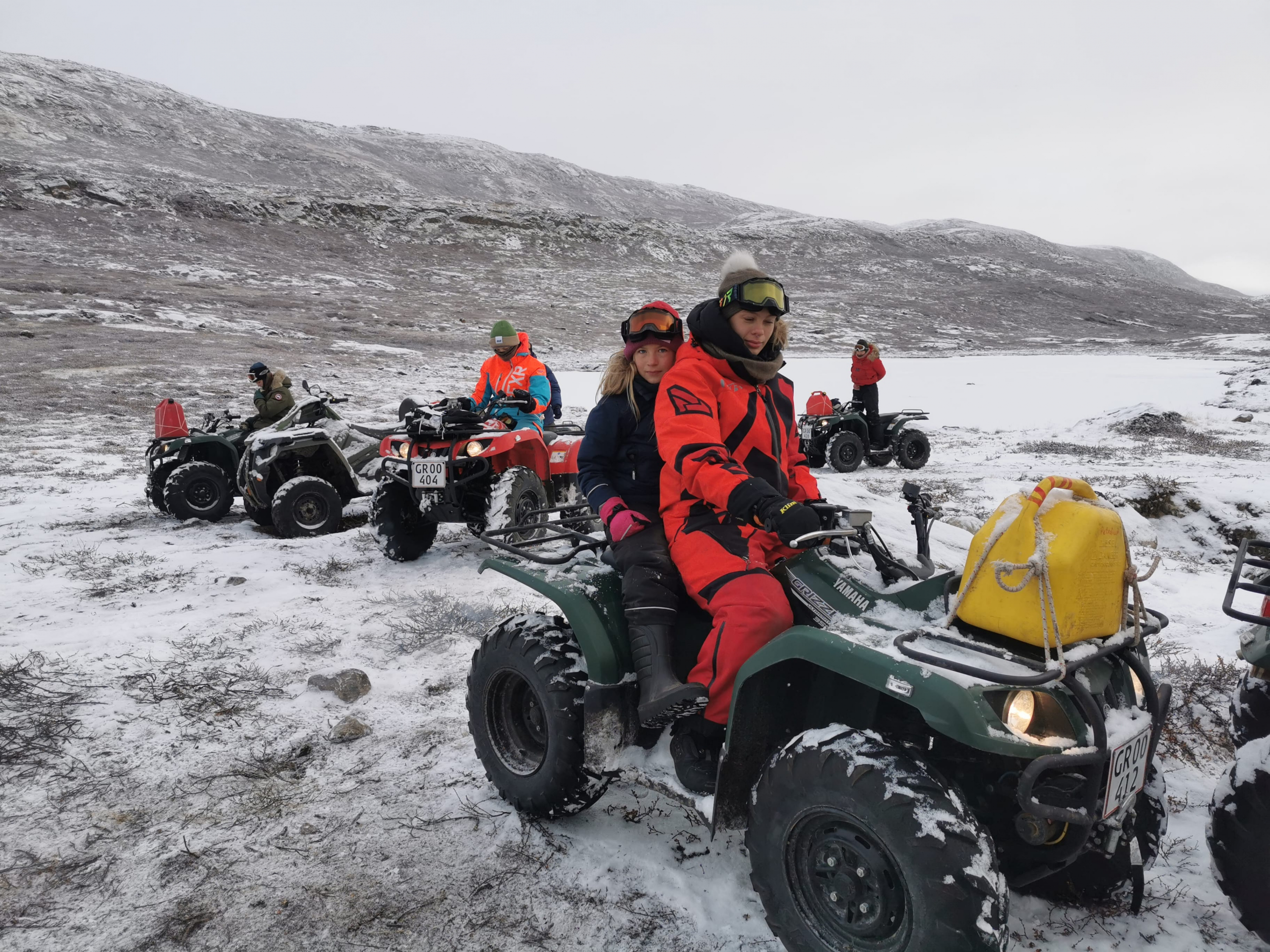Paving new futures with the Arctic Circle Road
Greenland, the impenetrable land carved by glaciers and ice, has the reputation of being difficult to get to or around due to natural barriers. And justly so. The 12th largest country in the world by total area has no two major towns connected by road. The lure of this challenge, the heights of its peaks and harshness of Arctic weather has drawn adventurers to Greenland for hundreds of years. However, times are changing, and new infrastructural access projects mean that Greenland is opening its doors to new opportunities. Enter the subject in focus for this article: the Arctic Circle Road.
Destination Arctic Circle is the tourism brand that represents the Qeqqata council in Greenland spanning the middle of West Greenland. Sisimiut, the second largest town in Greenland with 5,600 residents, is also the fiercely proud capital of the region.
Kangerlussuaq is the current main entry point into Greenland, and the start or end of many races, adventures and expeditions. It is perhaps not surprising, therefore, that in a place where people come to challenge themselves, the locals also like to explore new opportunities. To examine options, and improve possibilities for better quality of life.The Arctic Circle Road is one of these opportunities getting explored. It’s not a new concept, however. The proposed gravel road connecting Kangerlussuaq to Sisimiut is an idea floated even back in the 1960s, although it has been actively campaigned for in the past twenty five years. With the uncertainty of the future role of Kangerlussuaq airport, due to the diversion of traffic to new airports in Ilulissat and Nuuk, the council has pushed even harder for the development of the road to breathe new life to the destination.
Malik Berthelsen, the mayor of Qeqqata council, says: “In the past few years, the Arctic has become more and more popular. The Arctic Circle Road will open up opportunities for tourists who want to experience the grand nature of Greenland. I have no doubt that more tourists will come if we create attractive products even in the winter for cross country skiing or dog sledding expeditions. It will become even more viable if there are overnight accommodation opportunities in the area. It has been proven that other countries benefit from having famous, open roads, so why can we not do this in Greenland?”
Tourism forging the road
In September 2021, the Arctic Circle Road Project reached a milestone, as an independent Oxford Global Projects report commissioned by the Government of Greenland showed that there is a sound economic case for going ahead with the planning and designing of the road. The scope of the investigation was focused narrowly on tourism benefits, and it was based on OGP’s statistical analysis that the Arctic Circle Road would likely achieve a positive benefit-to-cost ratio, even under a conservative ratio. This is even if the cost of construction ends up being three times more than originally forecast. The potential change in population demographic due to the loss of status of Kangerlussuaq airport would not affect this analysis; in fact, the Arctic Circle Road might attract new investment and inhabitants to the town as a tourism hub.
The report agreed that the proposed primary tourism benefits presented were plausible. The goal for establishing this road is to allow for cheaper, flexible and independent land transportation thereby opening up new areas for tourism and business. Tourism opportunities include easier exploration access in the Unesco world-heritage area, Aasivissuit-Nipisat, Inuit Hunting Ground Between Ice and Sea, and more accessible tours of the backcountry using vehicles such as fat bikes and ATVs, while considering the preservation of the surrounding environment. This prompts possibilities for new huts and hotels along the road, including creating experiences for a wider scope of tourists than the current segment of self-sufficient extreme adventurers who hike the Arctic Circle Trail.
Wilderness experience continues in the Arctic Circle Trail
One of the biggest concerns for the Arctic Circle Road was that it would impact the wilderness experience of the renowned 160km Arctic Circle Trail. This is due to it sharing some of the same route. To allow for this road, a southern route towards the settlement of Sarfannguit has been established. Hikers can use this road instead, thereby continuing to enjoy hiking in the serenity of the wilderness. It must be noted that opportunities arise with the diversion. For example, hikers could eventually choose a shorter route, and continue on the journey via another transportation option other than foot. And Sarfannguit, a community with less than 100 inhabitants, might benefit from tourism.
Kira Mogensen, destination manager for Destination Arctic Circle says: “The road creates a lot of opportunities and allows ideas that were previously impossible to develop. The report presents a positive cost/benefit analysis of the potential of the Arctic Circle Road. The benefits of the road are not only limited to tourism, but stretch far beyond that.”
While the economic appraisal focuses on tourism benefits, the report also mentions other associated benefits such as further investment, lower cost of living and enabling more science and research projects deeper in the Greenlandic nature. Not unimportantly, the investment would also support the needs of area residents.
What’s the Arctic Circle ATV track?
There are a few related projects surrounding the Arctic Circle Road that have either stemmed from, or have been inspired by this Road. These include a 126 kilometre ATV track connecting Kangerlussuaq to Sisimiut. Originally meant to be a precursor to the longer term project Arctic Circle Road, the ATV track was to form a first phase by paving the foundations for the gravel road. This track, also thought impossible to execute previously, was completed one month ahead of projected time in September 2021 due to better-than-expected weather.It has been discussed that the track will allow for easier transportation during the summertime between the two communities and also allows for new forms of adventure tourism to develop.
Bo Lings from adventure supplier Sirius Greenland was one of the first to test the Arctic Circle ATV track together with his family, friends and co-workers. He explains,“We have long dreamed of this track, where we already offer winter expeditions on fat bikes and snowmobiles. With a summer track, we can develop the product portfolio and upgrade the experience with strategically placed camps, which also makes the operation better for us. The test ride shows us that the product is ideal for people who want a nature experience that was previously only available to extreme adventurers. With the ATV track, we can provide great guided service to softer adventurer travellers.”Whether the Arctic Circle Road will follow the same path as the ATV track is yet to be determined and subject to further consultation.
Prototyping Greenland’s car of the future: Ísar
Bold projects like the Arctic Circle Road need daring solutions that adapt to any conditions. In 2020, an agreement was signed between the Greenlandic company Arctic Circle Carrier, the Icelandic vehicle makers Jakar, and the municipality of Qeqqata, to deliver a vehicle specifically designed for the Greenlandic environment. Ari Arnórsson, founder of Jakar ehf, says: “We are taking technology that Icelanders have developed over 40 years to the next level, adapting vehicles to nature, not nature to vehicles. In this case, starting from scratch, meaning this will be a Greenlandic vehicle. ”It is intended that the Ísar “Roadless Rapid Transit” system can be used globally for land transport in areas without significant road infrastructure. Using geothermal energy, the unique carbon-capture eMethanol powered Ísar 4×4 vehicles are intended to carry passengers and freight through the unspoilt Unesco World Heritage area economically, fossil-fuel free and, not least, without excessive and invasive infrastructure to scar the pristine environment. Ísar is designed around passengers first, and ensures comfortable, rapid travel over very tough terrain while not impacting the environment, and can easily cross the tundra, the mountains and even the ice cap itself.
The Ísar vehicle made quiet history earlier in 2021 by getting approval for a three-year license to drive through Sisimiut council’s water protection zones. This is another feat not accomplished before, and only possible due to the car’s gentle footprint on the environment. Arctic Circle Carrier is now seeking investors to move to the final step.
Current Tourism in the Backcountry
Some of the tourism draw cards for the region include the grueling 160 kilometre multi-day hike, Arctic Circle Trail. The world’s toughest cross country competition, the Arctic Circle Race. The ice queen of running challenges, the Polar Circle Marathon. The extreme electric racing series held in 2021, Extreme E. All of these activities differ in their nature, but are united under one commonality: Destination Arctic Circle.
- The finances to build this road are not currently secure, but there has been significant progress made in the past five years (see below).
- The actual design of the road and its path is not decided yet.
- After the report by Oxford Global Projects, the National Government and municipality have now agreed to invest 5 million kroner each to the design of the road which is currently under tender.
Timeline to date
2015:
The municipality decided to go ahead with its plan to build an ATV track without National Government backing. It approved 22 million kroner for the construction of a simple ATV track between Kangerlussuaq and Sisimiut.
2018:
After UNESCO world heritage approval for Aasivissuit-Nipisat, Inuit Hunting Ground Between Ice and Sea, the municipal council approved another 27 kroner million to start construction of a real road in 2019.
2019:
The national government and Parliament; and the municipality both approved 5 million kroner each to plan how to best improve the ATV track so it can serve as a real road. This involves for example looking at the terrain and soil samples to get a better estimate for the cost of a real road.
June 2020:
The Environmental Impact Assessment was approved so that construction of both the ATV track and road to Aasivissuit-Tasersuaq cross road could start in July 2020.
September 2021:An independent report by consulting firm Oxford Global Projects concluded that the ACR business case had a positive cost-benefit ratio, even if the cost of completion was two to three times higher than estimated. It therefore concluded that the project could move to the next phase: designing the road.
This article was produced by VisitGreenland.
To join the Arctic Business Journal network as a content partner, contact us at pa**********@ar**************.com.




